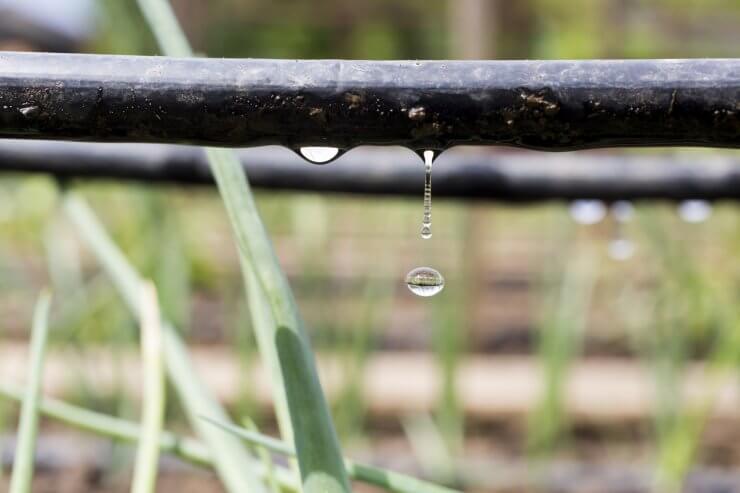
The hills are alive with the sound of…growing vegetables? You may think that living on a hillside is a disadvantage when it comes to outdoor gardening. But there are different gardening methods you can use to take advantage of your sloped yard. One great idea is to build planter boxes directly into your hill. Another great tool for hillsides is a gravity drip irrigation system. In fact, you can employ both methods and build the hillside vegetable garden of your Sound of Music dreams. Here are five benefits of a gravity drip irrigation system and one challenge to keep an eye out for!
Discover 7 top tips for growing, harvesting, and enjoying tomatoes from your home garden—when you access the FREE guide The Best Way to Grow Tomatoes, right now!
1. No need for pumps or taps
Unlike other watering and irrigation systems, a gravity drip irrigation system doesn’t require pumps or water taps. This is especially beneficial if your hillside garden location is farther away from your garden hose or water tap. Utilizing natural wells or reservoirs, or rain collection barrels, your gravity drip irrigation system will operate using the earth’s natural gravity that draws water from higher locations to lower ones.
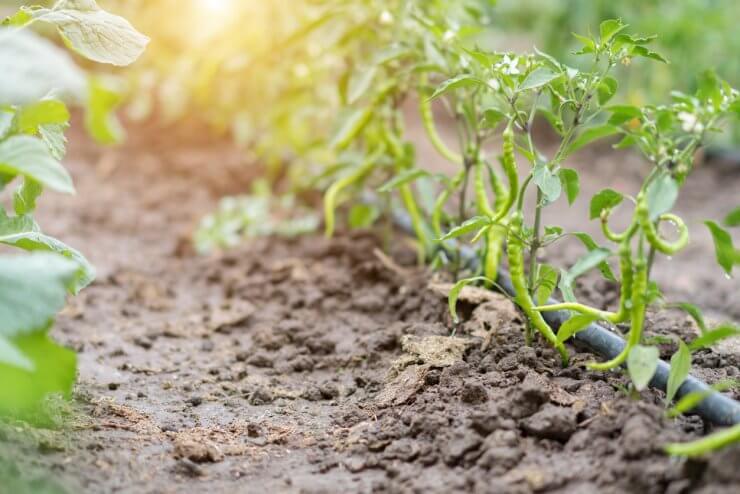
2. Control water run-off
Drip irrigation systems are great, in general, for controlling water runoff. But a gravity drip irrigation system uses a lower water pressure which greatly reduces soil erosion. This is important to consider with hillside vegetable gardens since sloped gardens are more prone to soil erosion.
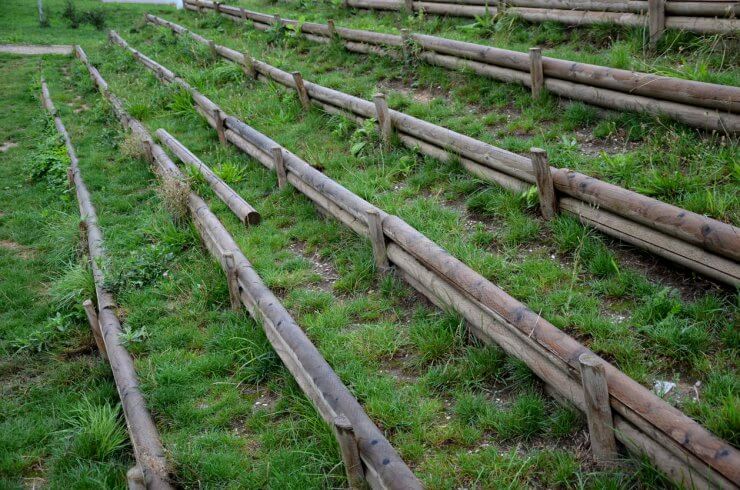
3. Repurpose natural elements and structures
I love an upcycled vegetable garden structure. When it comes to gardening on a steep hillside, you may need to repurpose materials to help prevent erosion. The steeper the hill, the more materials you’ll need to create graduated barriers that will prevent soil erosion from wind and water. Logs and old railroad ties are perfect and can be dug into the tops of the hillside to support shallow reservoirs. Rainwater will collect there before being fed into your gravity drip irrigation system.
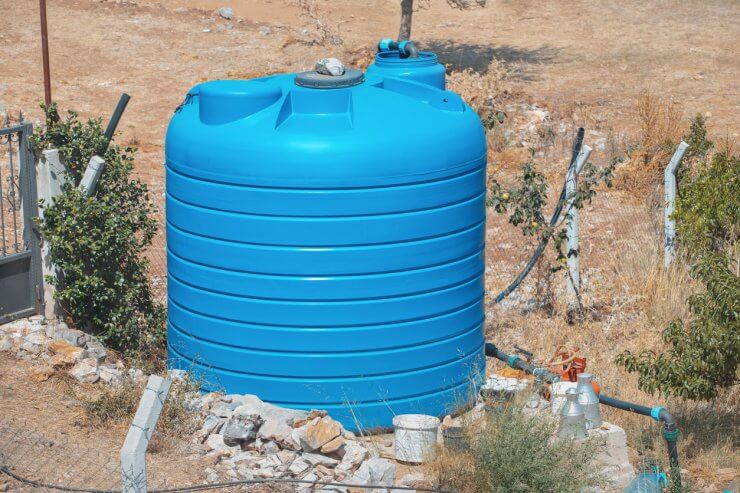
4. Reuse rainwater
In water-scarce climates, collecting and reusing rainwater is a great way to maximize your water resources. (Not unlike the resourcefulness of turning curtains into matching outfits.) Reusing water is especially helpful in warmer months when some cities and states impose water bans. By collecting rainwater in rain barrels, you’ll be able to conserve water and make sure your vegetables and herbs get the hydration they need. Leverage your hillside garden by positioning your rain barrel at the top of the slope and connecting the gravity drip irrigation system below.
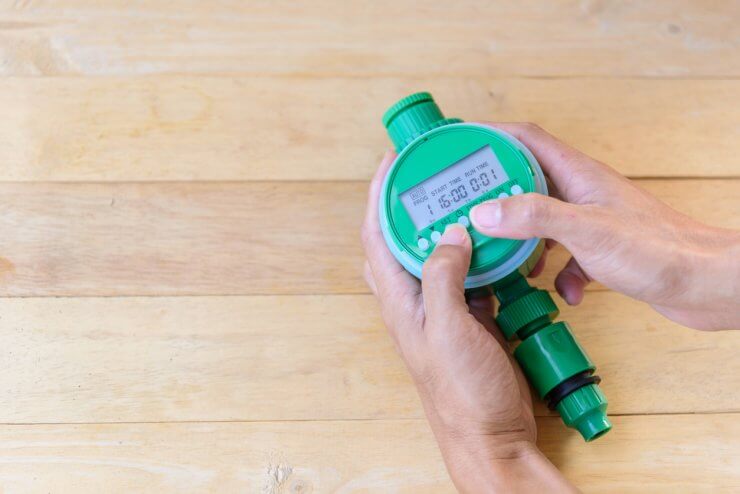
5. Ability to automate
With the addition of a rain barrel, automate your gravity drip irrigation system by adding a battery-powered timer. Equal parts art and science, you’ll need to play around with the timing to decide just how much water your vegetables need. You’ll also find that as the water level decreases in your rain barrel, you’ll need to increase the watering time since the water pressure reduces. Automating your irrigation is a lifesaver when you’re on vacation. (Literally, you’re saving your veggies’ lives!)
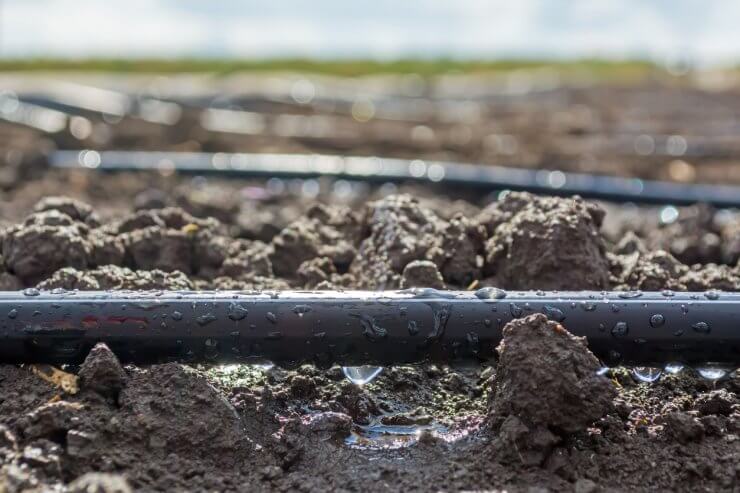
Gravity drip irrigation challenge and solution
Clogs in your drip irrigation hose
Because the holes are so small in a gravity drip irrigation system, they’re more prone to clogging than sprinklers or soaker hoses. Clogs can reduce or completely stop the water flow and require a full line flushing. To avoid this headache, install a simple in-line mesh filter between your rain barrel and irrigation hose. If you notice water pressure is reducing (and it’s not due to water levels going down), check your filter. A quick rinse of the mesh screen will typically fix the water pressure issue and bring your gravity drip irrigation system back online.
That will bring us back to Do (oh oh oh)
Do you use a gravity drip irrigation system? What does your setup look like? Got any tips to share? Let me know in the comments!
Discover 7 top tips for growing, harvesting, and enjoying tomatoes from your home garden—when you access the FREE guide The Best Way to Grow Tomatoes, right now!





I built a 2×4 stand roughly 4 feet tall. It holds 4 five gallon buckets from Home Depot. Drilled a hole in the bottoms, installed a brass coupler and hooked the soaker hoses up. Two hoses per bucket. Ran the hoses along the rows. It takes about 20 or 30 minutes for each bucket to drain. This is at a public garden area, I rent a 20×30 plot each year. System works good. R Hansen